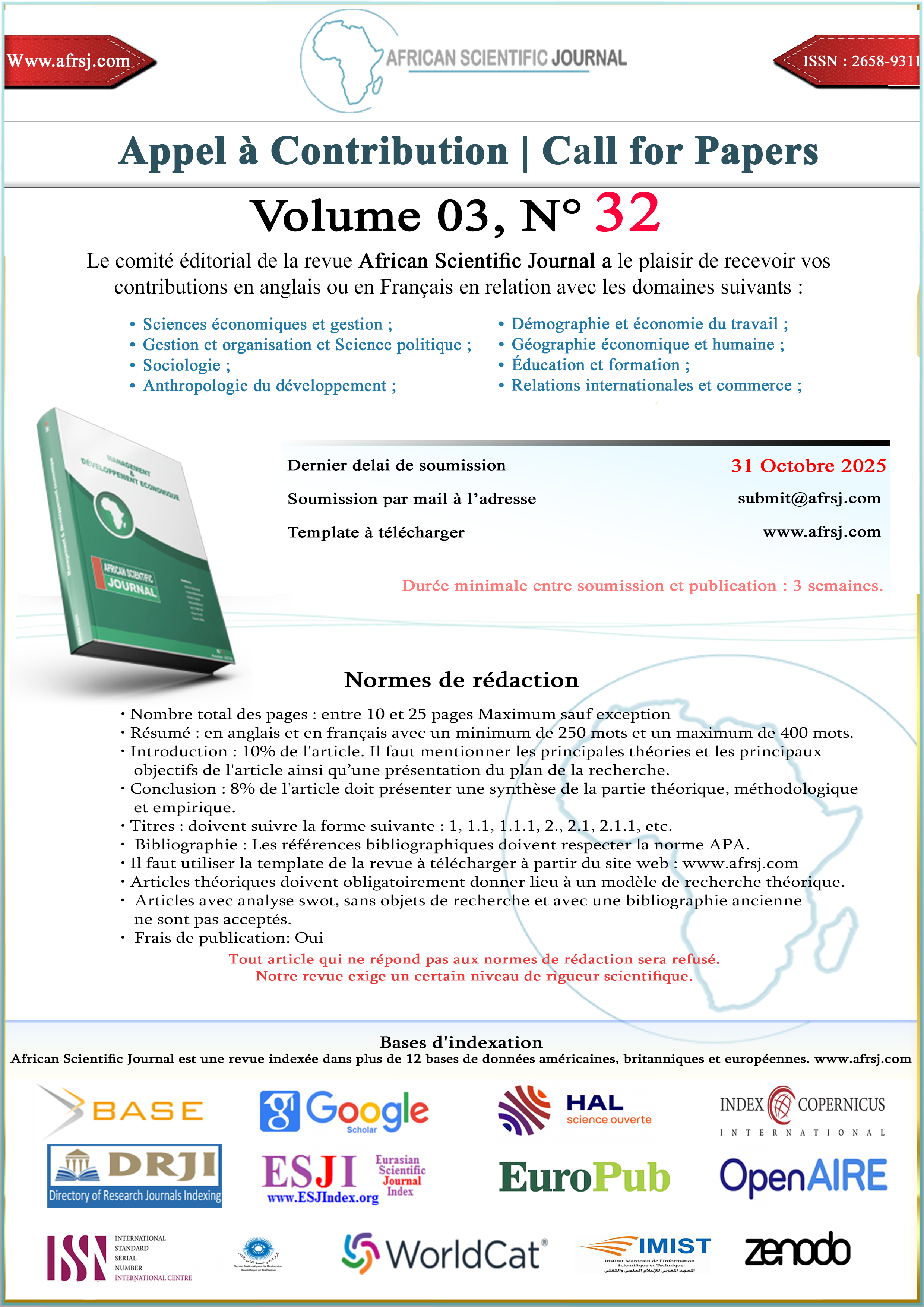Impact du revenu et de la consommation de l’énergie sur les émissions de CO2 au Maroc : Test de la courbe environnementale de Kuznets
DOI :
https://doi.org/10.5281/zenodo.7520861Mots-clés :
CKE, émissions de CO2, ARDL, MarocRésumé
Ce travail utilise le test ARDL pour évaluer empiriquement la validité de la courbe de Kuznets environnementale. Notre étude cherche à déterminer l’existence d’un lien à long terme entre les émissions de CO2 la croissance économique et la consommation énergétique.
Les tests de cointégration de Johansen démontrent qu’une relation robuste à long terme existe entre les variables. Plus précisément, le PIB influe positivement sur les émissions de dioxyde de carbone, tandis que le carré du PIB influe négativement et l’énergie consommée ont un impact positive. Les tests de causalité de Granger indiquent en outre que le PIB et le PIB² ont provoqué les émissions de CO2 de manière unidirectionnelle à court terme, sans rétroaction.
Les résultats soutiennent généralement l’existence d’une relation en U inversé entre la croissance économique et les émissions de carbone et une relation linéaire entre le CO2 et la consommation énergétique.
L’existence d’une courbe de Kuznets à long terme est le résultat de différentes politiques environnementales nationales, cependant l’impact de l’énergie reste relativement important suite à la dépendance énergétique liée aux énergies fossiles. L’installation des différents projets d’énergies renouvelables à travers le pays à savoir les éoliennes et les panneaux solaires s’inscrivent dans cette tendance de réduction de la dépendance et de la pollution engendrée par l’usage du charbon. Les conclusions de l’étude corroborent la courbe de Kuznets environnementale pour le Maroc entre 1980 et 2018.
Téléchargements
Publiée
Comment citer
Numéro
Rubrique
Licence
(c) Tous droits réservés African Scientific Journal 2022

Ce travail est disponible sous licence Creative Commons Attribution - Pas d'Utilisation Commerciale - Pas de Modification 4.0 International.





















